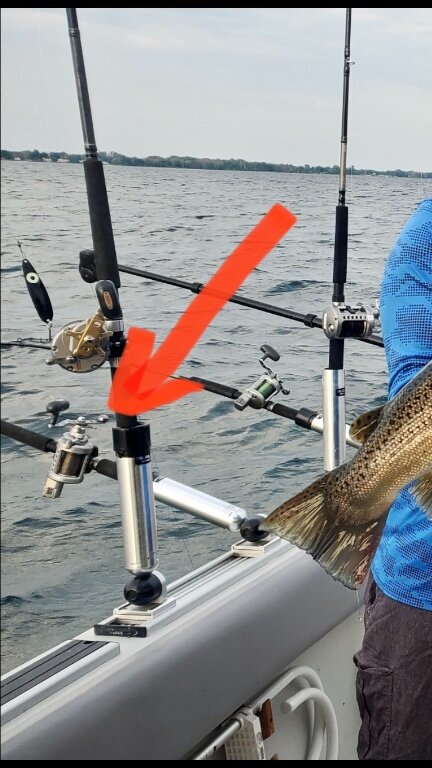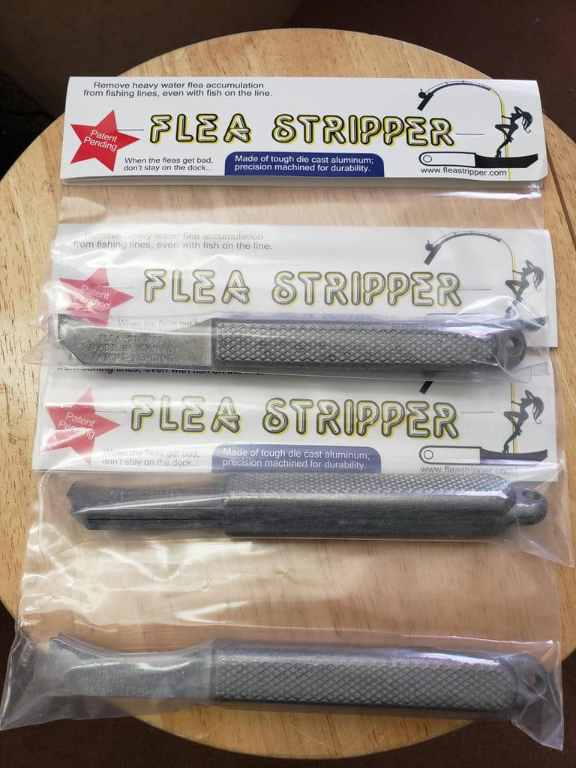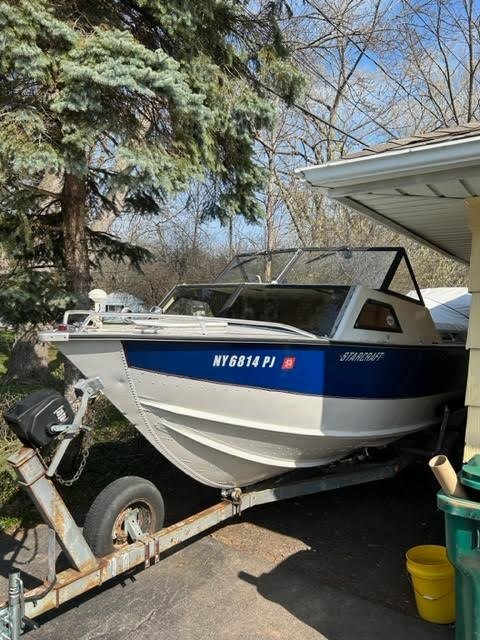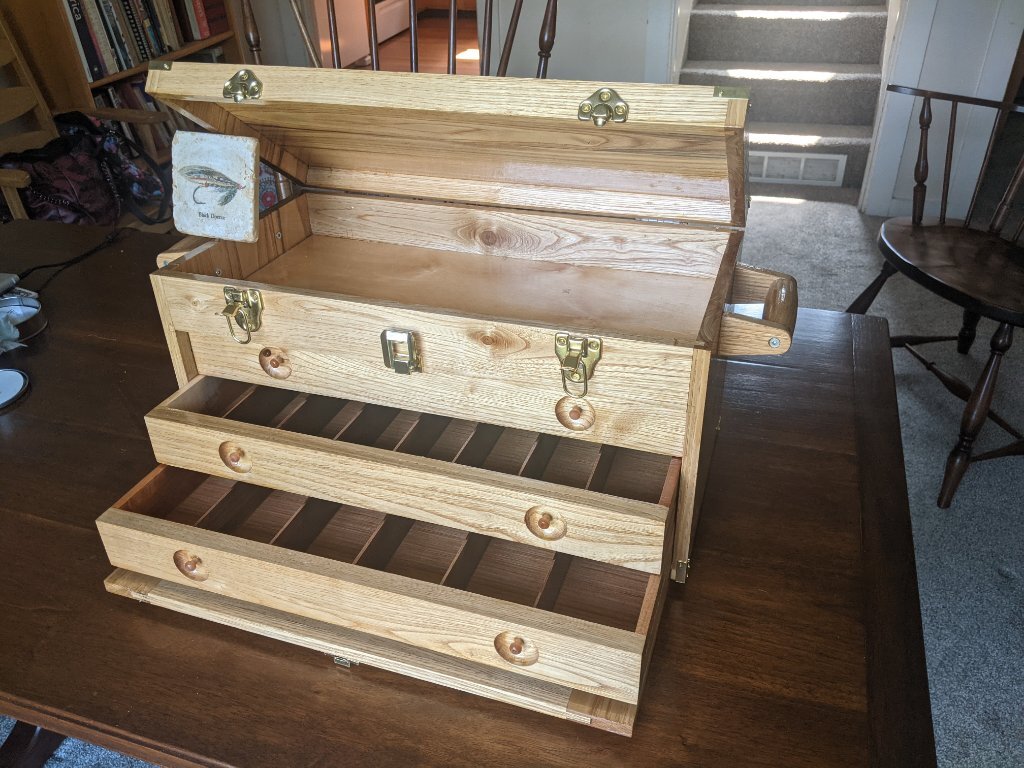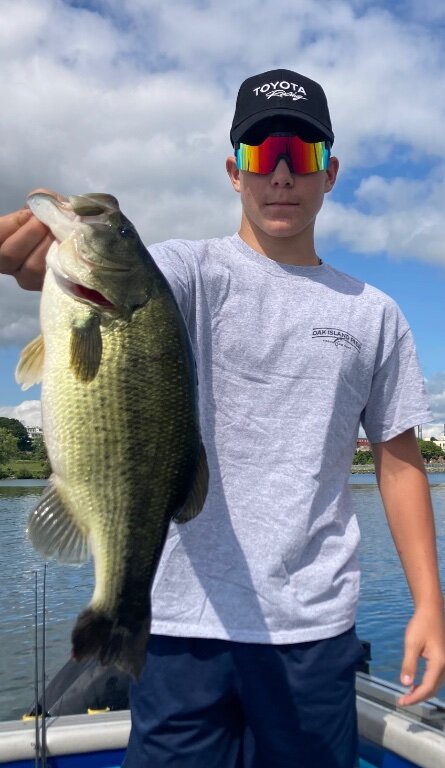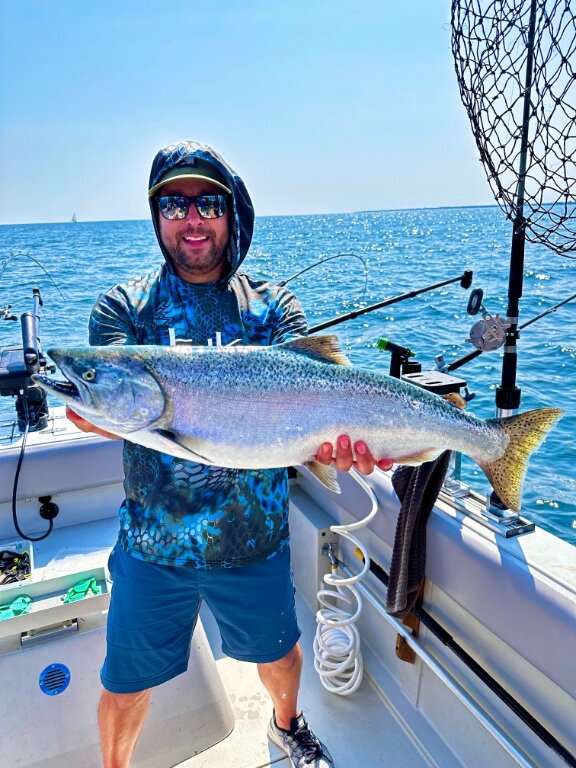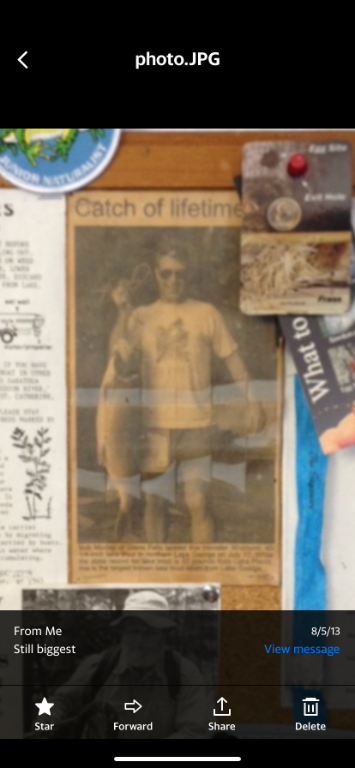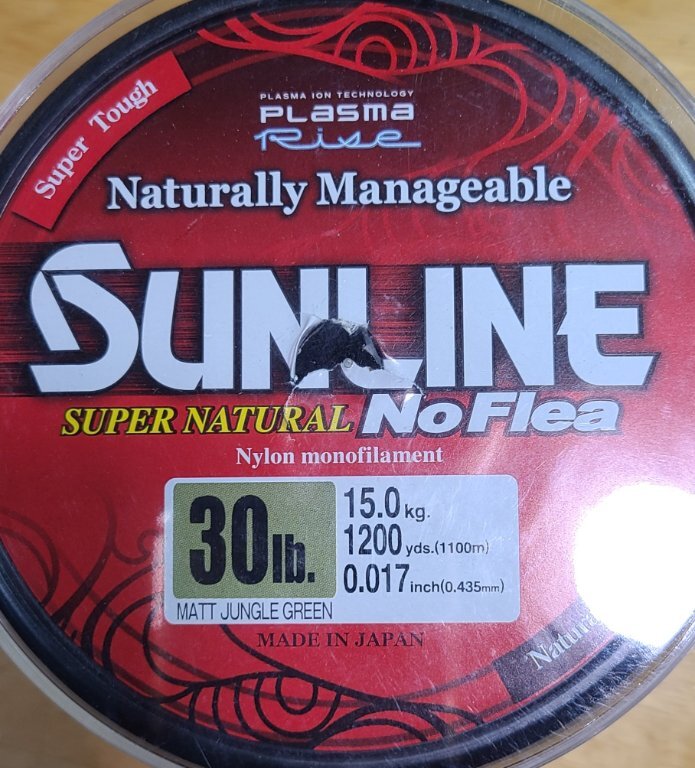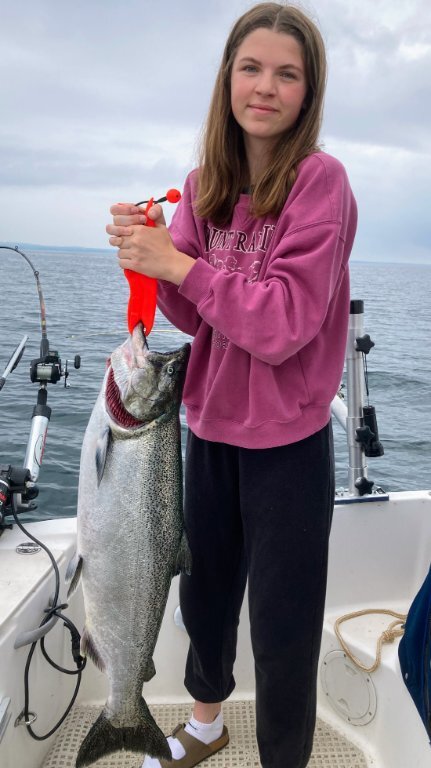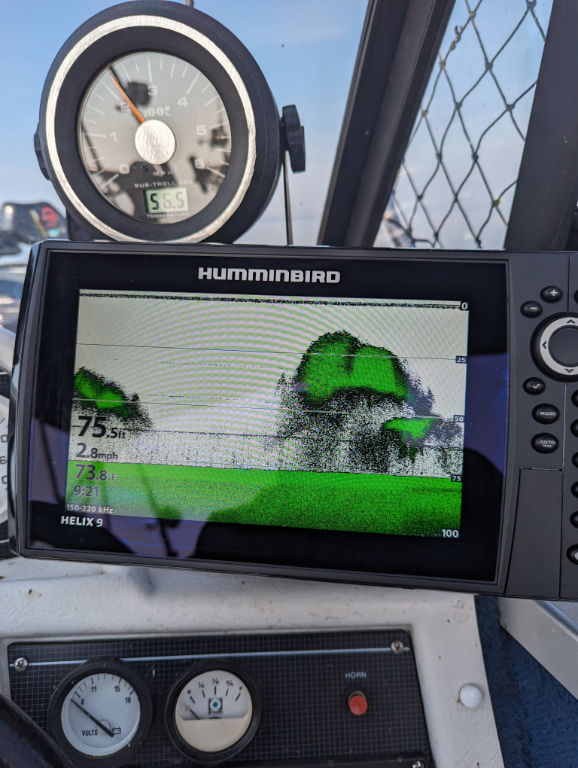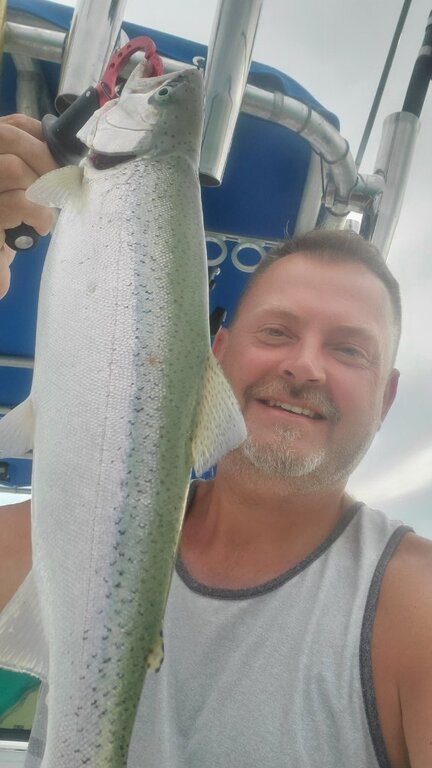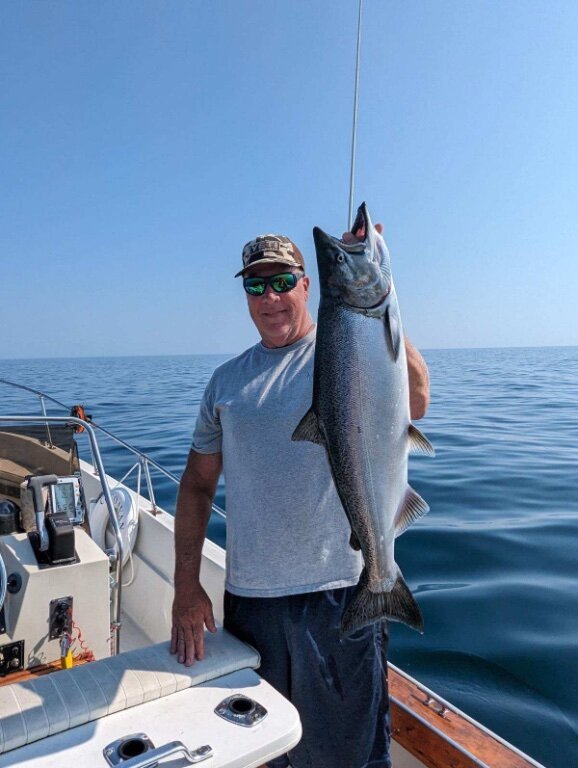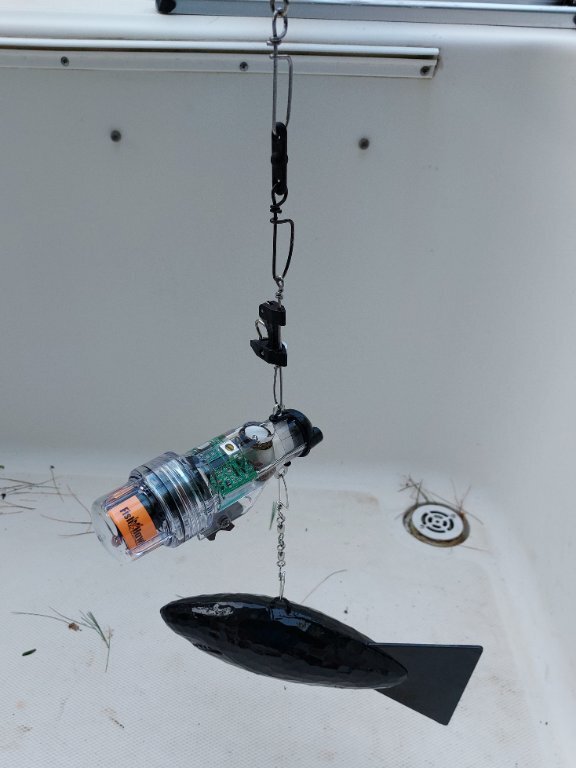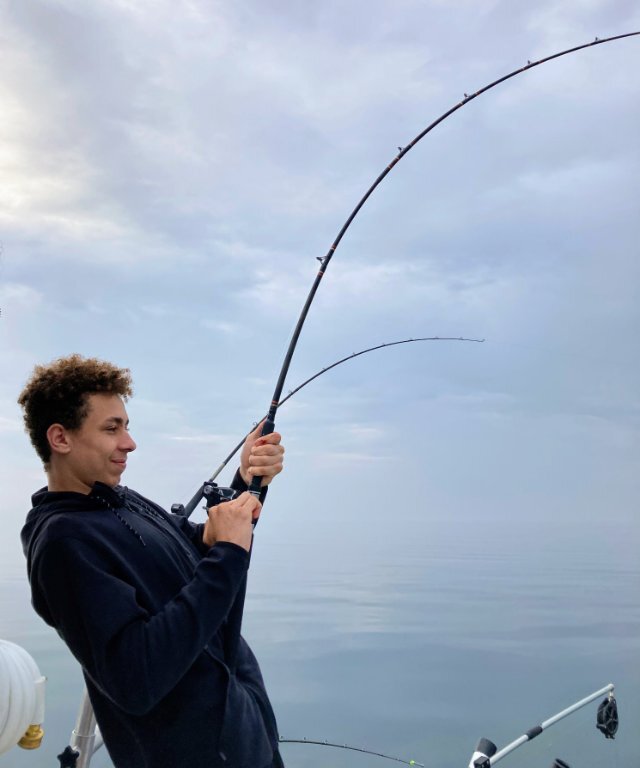-
Posts
13,806 -
Joined
-
Last visited
Content Type
Profiles
Forums
Events
Gallery
Store
Everything posted by Sk8man
-
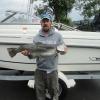
Lead core or Copper on the finger lake
Sk8man replied to tandmbait's topic in Finger Lakes Discussion
There are probably a million things that could be said here but each of these setups presents differently in the water and differ in flexibility of use. I would say the longest copper that is worth running on the Fingers is a 300 and with leadcore a ten color. The time of season makes a large difference. In the spring shorter lengths of each type are effective running ether sticks or spoons I have dedicated 1, 3, 5, 7, and ten color options.. As the summer moves on the thermocline (and desired temps) go deeper so the coppers and leadcores need to go there. The thermocline often goes to 70 ft and beyond so neither of them may get quite there so they may not be the best strategy then or use weights attached to them to get down further. A lot of care needs to be maintained running one of each at the same time of similar length in the spread as if they overlap and you will have the worst mess you can imagine. As far as cons to their use coppers can kink if you aren't careful letting them out or reeling them in. They can also "birds nest" on you for the same reason. They both vary depth according to your trolling speed. Leadcore can kink but is more forgiving but the lead inside can break and somewhat weaken it without your noticing it but the main strength is actually in the sheathiing that surrounds it so usually you are ok. There is a learning curve to deploying either of them and you should attach either above them on the braid etc. not on the leadcore or copper itself. Either can be run from boards or straight off the back down the "chute" and with a complicated spread you may want to do this and run it short down the middle avoiding riggers etc. These are the basic considerations - others may have additional things. Tip: deploy each of them slowly. -

Wire Line Rods- Roller Tip Experience
Sk8man replied to tyler.woodard04's topic in Tackle and Techniques
I have used roller tip rods for the past 50 years or more. I do not use the swivel type because I like to angle the rods in the rod holder so that the tips remain in a 45 degree angle or so. I don't know what roller tips yours are but a lot of the less expensive ones have more spacing between the roller and side plate so that smaller diameter braid and 7 strand wire wire nests between the side plate and the roller and it can actually snap the braid or wire if a big fish hits or you snag up on something if the wire is in that position. Another thing is that the cheaper roller tips have aluminum side plates which the 30 pound 7 strand wire can actually cut through like a hack saw, One solution is to purchase better roller tips but they can be quite expensive. Another option is to look around for some of the older Allen brand stainless roller tips (sometimes on older freshwater Seth Green rods or salt water rods). For years I have used these tips and moved up to 60 lb wire on my Seth Greens and problem solved but the wire has more "blowback" (from water resistance) which I have learned to live with. When using braid it is necessary to move up to much larger pound test than the 30 lb to avoid the problem. I quit using braid on wire setups for that reason after losing an entire Seth Green rig years ago. Another potential option is to switch to 19 strand wire as it doesn't cut through the side plates of the cheaper aluminum sideplates and just use straight wire to the fluoro leader dispensing with the braid. I have rods with twilli's as well and they work fine so that is another cheaper option but the rollers tend to be smoother when reeling in big fish. -
A couple things that may be worth mentioning: the distance back of the weight is something of a preference issue but it also depends on what type of attractor you intend to use before the fly. A Spin Doctor acts very different from a flasher and both from a dodger. In general the tighter to the ball you locate any of them the the more potential action from the attractor. I like to observe how they actually look next to the boat before fully submerging them. The length of the leader to the fly also can be important, and again it depends on which attractor is being used. It pays to look at how the setup is operating in the water before sending it to make sure it looks right. In general, the deeper you go with the rigger the closer to the weight you can be and this is especially true when down past 100 ft where you may encounter a mix of lakers and chinooks.
-
-
-
-
I remember back in the 50's and 60's there were huge die offs on Seneca and as mentioned they littered the shoreline and smelled to high heaven. I'm not sure of the specific dynamics involved but I do believe it can be a population regulation mechanism like that seen in some insects, birds, and some rodents etc. We have been discussing the apparent absence of predators (e..g. Lake Trout, Pike and others) and maybe this contributed to the situation.
-

Copper/Lead Core Question
Sk8man replied to VanderLaan's topic in Questions About Trout & Salmon Trolling?
It is really a personal preference...I usually wait til the swivel hits the water and a few feet thereafter put the board on but i don't think it is something really critical. -

Sandy 7/11/23 - smash fest!
Sk8man replied to GAMBLER's topic in New York Fishing Reports - Lake Ontario (South Shore)
-

Copper pullers?
Sk8man replied to Lake George Copper Puller's topic in Welcome to Lake Ontario United - Fishing Forum
-

Sunline Supernatural NoFlea Line Review
Sk8man replied to 13owhunter's topic in Tackle and Techniques
I guess in all fairness to the various manufacturers trying to beat this perplexing problem I don't see any total solution to the problem. Flea densities vary greatly throughout the water column and when they are at their height in terms of density they will adhere to about anything regardless of component makeup or diameter. I have had them clog the downrigger cable so thick that the rigger barely retrieved. Most of the time the lines go in and out of the various densities of fleas giving different results on the various lines and some spots on the water don't seem to have them at all. A lot of times folks assume that their lines are the reason that they don't have fleas accruing on them which may not actually be the case; they may just be fishing in spots where there are none or fewer flea densities. I have used the 30 lb SeaFlee line on my riggers for about ten years. It seems to perhaps shed them better than the 30 lb mono lines I have tried alongside it but they still get on there. Any line connection (e.g. swivels or knots) are particularly prone to picking them up regardless of setup. Like a lot of things in life there appears to be no "silver bullet" at present. Checking lines more frequently and keeping a flea scraper handy seem to be the current options. -

Sodus 7/7 a.m.
Sk8man replied to Hillside's topic in New York Fishing Reports - Lake Ontario (South Shore)
-

Unusual Condition off of Ibay
Sk8man replied to Sea Lion's topic in New York Fishing Reports - Lake Ontario (South Shore)
-

Copper pullers?
Sk8man replied to Lake George Copper Puller's topic in Welcome to Lake Ontario United - Fishing Forum
Welcome to LOU Rob. There are still a bunch of us dinosaurs on the Finger Lakes interested inpulling copper or having done so for much of our lives. It is one of the most effective fishing techniques out there for Lakers despite the preoccupation with more modern techniques and equipment. Best of luck to you and your kids. It is a great tradition worthy of passing on. -
-
Browns aren't the easiest fish to find but some things seem to be more successful than others catching them. First of all on the Fingers they are often night feeders and inhabit the shallows then so getting on the water just before light is often the best option. The browns are usually located near drop offs in 40- 80 ft of water at this time of the season and especially where the water temp is 58-60 degrees and usually near bottom They also seem more vulnerable to live or dead bait such as sawbellies or in a pinch shiners. Commercially prepared shad (sold in packages or jars at local tackle shops or places like Runnings or Walmart) can also work. You can use standard spinning rods with 8-10 lb test with an 8 lb fluoro leader about 24 to 32 inches long with a #8 double or treble hook at the end attached to the main mono line with a small swivel snap. above the swivel a weighted bobber is attached so that it can slip on the main line allowing the bait to cover depths. If windy it may require a lot of adjustments and re-casting. Trolling in shallow water 8- 25 ft in very early hours or using planers boards can also work. Trolling out beyond 80 ft or so is seldom the ticket to success.
-
You have a PM
-
Mono can be used for small divers in shallow water where it is ok to have a little give in the line, but not as much as with a lot of line out. Wire is often the best option for large divers and where a lot of line may be out and using a mono or fluoro leader at the end of it. 65 pound braid is another option. Although fleas stick to small diameter lines and especially braid the diameter at 65 or above seems less prone to build up. Be aware however that when fleas are thiickest they can adhere to about any diameter even 150 or 200 lb test downrigger cable. Usually the fleas stick to nearly any joint in a line so minimizing these places to the degree possible is also advised
-

Braddocks 7/5
Sk8man replied to whaler1's topic in New York Fishing Reports - Lake Ontario (South Shore)
-
-

Sodus 7/3 a.m.
Sk8man replied to Hillside's topic in New York Fishing Reports - Lake Ontario (South Shore)


